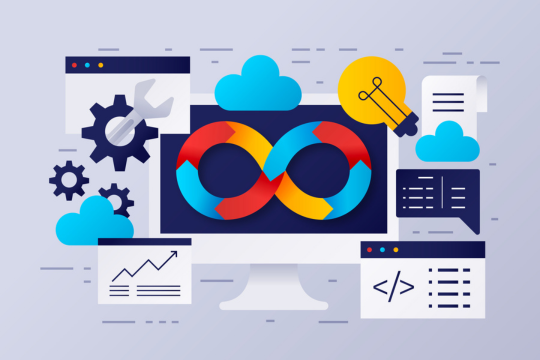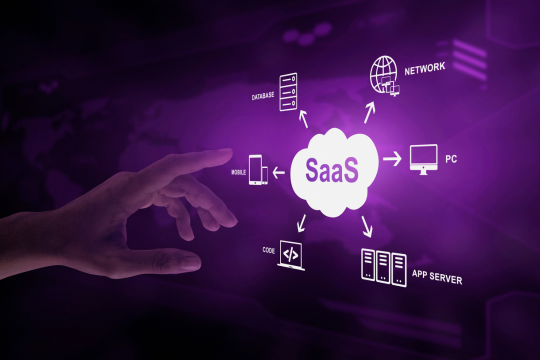Boost Your Business Efficiency with AWS & DevOps
In today's rapidly changing digital economy, companies must continually innovate and deliver value to stay ahead of the competition. Being operationally efficient, minimizing time-to-market, and maintaining scalability are business necessities now. That is where the combination of Amazon Web Services(AWS) and DevOpsmakes a very powerful one. Together, they help organizations achieve streamlined development cycles, infrastructure automation, and scalability at lightning speed—without sacrificing on quality or security.
In this comprehensive article, we will discuss:
- How AWS and DevOps complement each other
- Their advantages
- Prominent tools and services
- How companies can utilize this combination to enhance efficiency
Table of contents [Show]
- 1 What is AWS?
- 1. 1 What is DevOps?
- 1. 2 Why Combine AWS and DevOps?
- 1. 3 Benefits of Using AWS with DevOps
- 1. 4 Key AWS Tools for DevOps Success
- 1. 5 Implementing AWS DevOps: Step-by-Step
- 1. 6 How AWS & DevOps Improved SaaS Efficiency
- 1. 7 Best Practices for Using AWS & DevOps
- 1. 8 Future of AWS & DevOps
- 1. 9 Final Thoughts
What is AWS?
Amazon Web Services (AWS) is a complete cloud computing platform offered by Amazon. It provides more than 200 fully functional services, such as computing power, storage, databases, machine learning, and many others, allowing businesses to create and operate applications without the need to manage physical infrastructure.
Prominent AWS Features:
- On-demand resource provisioning
- Pay-as-you-go pricing model
- Global scalability and availability
- Security and compliance capabilities

What is DevOps?
DevOps is a technical and cultural method that combines software development (Dev) with IT operations (Ops). It aims to reduce the development cycle and provide high-quality software in an automated and continuous way.
Core DevOps Principles:
- Continuous Integration/Continuous Deployment (CI/CD)
- Infrastructure as Code (IaC)
- Automation and Monitoring
- Collaboration and Communication
Why Combine AWS and DevOps?
Whereas DevOpsis about process and culture, AWS is the technological building block on which to build those processes in order to effectively do them. The pairing enables teams to:
- Automate provisioning of infrastructure
- Accelerate software deployment cycles
- Enhance collaboration between teams
- Guarantee application scalability and reliability
Benefits of Using AWS with DevOps
1. Quicker Time to Market
With AWS offerings such as CodePipeline, CodeDeploy, and EC2, development teams can automate testing, deployment, and delivery. This assists in releasing updates and new features quicker than ever.
2. Cost Effectiveness
AWS has a flexible pricing plan. Pay for what you use. Coupled with DevOps practices such as automation and monitoring, it minimizes human errors and saves operational expenditure.
3. Improved Collaboration
DevOps fosters immediate collaboration between developers, testers, and operations teams. With AWS tools facilitating version control, shared repositories, and CI/CD pipelines, the communication gap is easily bridged.
4. Scalability and Flexibility
AWS cloud-native design enables companies to scale resources up or down according to demand. Coupled with DevOpsautomation, this provides flexibility to scale without downtime.
5. Improved Security
AWS delivers advanced security services such as AWS IAM, AWS Shield, and Key Management Service (KMS). When coupled with DevOpspractices such as secure coding and automated compliance scanning, companies can provide strong protection.
Key AWS Tools for DevOps Success
1. AWS CodePipeline
An end-to-end CI/CD service that deploys build, test, and deployment stages automatically.
2. AWS CodeBuild
Builds source code, executes tests, and delivers ready-to-deploy software packages.
3. AWS CodeDeploy
Streamlines deployment to multiple environments such as EC2, Lambda, or on-premises servers.
4. AWS CloudFormation
Facilitates Infrastructure as Code (IaC), where developers can deploy infrastructure through templates.
5. Amazon EC2 (Elastic Compute Cloud)
Delivers elastic compute capacity to host applications, test, and deploy applications.
6. AWS Lambda
Allows you to execute code without provisioning or administering servers—ideal for developing microservices.
7. Amazon CloudWatch
Monitors your infrastructure and applications in real time and sends alerts and actions when required.
8. AWS Elastic Beanstalk
Makes application deployment easier with a fully managed service.
Implementing AWS DevOps: Step-by-Step
Step 1: Evaluate Your Existing Workflow
Find pain points, bottlenecks, and where scalability or automation is missing.
Step 2: Establish Clear DevOps Objectives
Identify KPIs like quicker release cycles, fewer deployment failures, or better uptime.
Step 3: Begin with CI/CD Pipelines
Apply tools such as CodePipeline and CodeBuild for automating the deployment and testing of code.
Step 4: Automate Infrastructure
Apply cloud provisioning and management using CloudFormation or Terraform.
Step 5: Monitor and Optimize
Employ CloudWatch and X-Ray for monitoring app performance and debugging.
How AWS & DevOps Improved SaaS Efficiency
Company: A mid-sized SaaS company that provides project management software.
Challenge: Slow release cycles, high infrastructure expenses, and regular system downtime.
Solution:
- Applied CI/CD using CodePipeline and CodeDeploy
- Moved infrastructure to EC2 and serverless parts using Lambda
- Set up monitoring using CloudWatch
- Policies of automated scaling using Auto Scaling Groups
Results:
- 60% accelerated release cycles
- 40% cost savings on infrastructure
- 99.9% system availability
- More customer satisfaction owing to fewer bugs
Best Practices for Using AWS & DevOps
- Start Small, Scale Gradually
Don't automate everything in a hurry. Start small and scale. - Use Version Control for Infrastructure
Use tools such as Git and CloudFormation to manage infrastructure changes. - Enable Automated Testing
Automate unit, integration, and performance tests within your CI/CD pipeline. - Watch Continuously
Leverage CloudWatch, X-Ray, and SNS for monitoring and notification in real-time. - Establish Security by Default
Enforce best practices for security via IAM roles, encryption, and automated compliance.

Future of AWS & DevOps
The cloud-based DevOpsfuture is shifting towards automation powered by AI, event-driven architecture, and serverless computing. AWS continues to grow its offerings with new machine learning (e.g., SageMaker) and advanced monitoring innovations, as well as container orchestration (e.g., ECS, EKS).
Companies that get ahead of the curve by embracing such advancements will derive substantial benefits in operations and remain nimble within a dynamic market.
Final Thoughts
DevOps with AWS is a game-changing combination for organizations looking to enhance efficiency, scalability, and agility. Regardless of whether you're an enterprise or a startup, tapping into this combination enables you to ship superior software, faster and more consistently.
By adopting automation, continuous delivery, and cloud-native infrastructure, organizations can unleash new degrees of performance and innovation. The future is yours to take—and with AWS & DevOps, you're ready to seize it.
